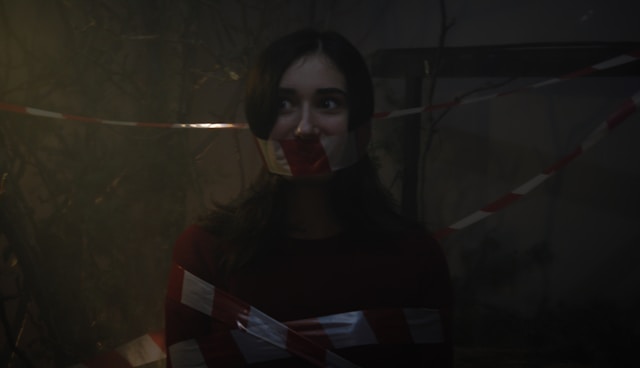“Breaking Bad: A Fresh Perspective”

“Breaking Bad” revolutionized the landscape of television with its compelling narrative centered around Walter White’s transformation from a mild-mannered high school chemistry teacher into a ruthless drug kingpin. The show delves deep into the complexities of human nature, exploring the blurred lines between good and evil as Walter navigates the moral dilemmas that arise from his descent into the criminal underworld.
One of the most intriguing aspects of “Breaking Bad” is the dynamic relationship between Walter White and Jesse Pinkman. Their partnership evolves from a mere business arrangement to a complex bond filled with loyalty, betrayal, and conflicting emotions. The show masterfully showcases the interplay of power dynamics and moral conflicts between these two central characters, adding layers of depth to their interactions and character development.
“The Rise of a New Antihero”
Antiheroes have become a prominent feature in modern television, challenging the traditional concept of morality and heroism. These complex characters blur the lines between right and wrong, drawing viewers in with their flawed yet compelling personalities. The rise of the new antihero signifies a shift in storytelling, where audiences are no longer drawn to cookie-cutter heroes but rather to individuals with shades of gray.
Characters like Walter White from “Breaking Bad” have captivated audiences with their descent into darkness, offering a glimpse into the complexities of human nature. These antiheroes navigate moral dilemmas, making ethically questionable decisions that both repel and intrigue viewers. The new antihero archetype presents a more realistic depiction of individuals who are neither purely good nor purely evil, resonating with audiences who appreciate the nuances of human behavior.
“Exploring Complex Character Dynamics”

Breaking Bad masterfully delves into the intricate layers of its characters, showcasing their evolution and internal conflicts. Walter White, the mild-mannered high school chemistry teacher turned methamphetamine manufacturer, undergoes a profound transformation throughout the series. His descent into the criminal underworld is not a linear progression but rather a complex interplay of personal motivations, moral justifications, and psychological unraveling. The tension between his desire for power and his sense of morality creates a captivating character study that keeps viewers engaged and questioning his every decision.
In contrast, Jesse Pinkman’s character arc provides a poignant counterbalance to Walter’s narrative. Initially portrayed as a delinquent and low-level drug dealer, Jesse’s journey is marked by vulnerability, resilience, and a deep sense of guilt. His relationships with Walter and other characters reveal a fragile yet resilient soul struggling to break free from the cycle of violence and self-destruction. The dynamics between Walter and Jesse epitomize the complexity of human relationships, filled with betrayal, loyalty, manipulation, and genuine camaraderie, making them one of the most compelling duos in television history.
“Unconventional Storytelling Techniques”
Breaking Bad revolutionized the television landscape by employing a variety of unconventional storytelling techniques that captivated audiences worldwide. One of the standout techniques used in the series was the non-linear narrative structure, where flash-forwards and flashbacks were seamlessly woven into the plot to provide deeper insight into the characters’ motivations and actions. This unconventional approach not only added layers of complexity to the storytelling but also heightened the suspense and intrigue surrounding the characters’ choices and consequences.
Moreover, Breaking Bad also subverted traditional genre conventions by seamlessly blending elements of crime drama with psychological thriller aspects. The series constantly blurred the lines between right and wrong, showcasing the moral ambiguity of its characters in a way that challenged viewers’ perceptions of morality and ethics. By pushing the boundaries of storytelling and characterization, Breaking Bad set a new standard for how television narratives could explore the darker aspects of human nature with nuance and depth.
“The Impact of Moral Ambiguity”

Moral ambiguity is a central theme in “Breaking Bad,” challenging viewers to question traditional notions of right and wrong. The show’s protagonist, Walter White, evolves from a sympathetic, mild-mannered chemistry teacher to a ruthless drug kingpin, blurring the lines between hero and villain. This moral complexity forces audiences to confront their own ethical boundaries and consider the underlying motivations behind characters’ actions.
“Breaking Bad’s Influence on Modern Television”
Breaking Bad revolutionized the landscape of television by showcasing a protagonist’s transformation from a mild-mannered high school chemistry teacher to a ruthless methamphetamine kingpin. This narrative complexity and character evolution set a new standard for storytelling, inspiring numerous shows to delve deeper into the psyche of their characters and embrace morally gray storylines.
The series’ bold exploration of moral ambiguity and ethical dilemmas challenged traditional norms, paving the way for a new wave of antihero-driven dramas that blurred the lines between right and wrong. Audiences were drawn to the raw authenticity of the characters and the moral complexities they grappled with, setting a precedent for the nuanced portrayals of flawed protagonists that would dominate the modern television landscape.
“Uncovering Hidden Themes and Symbolism”

One of the most fascinating aspects of “Breaking Bad” lies in its intricate web of hidden themes and symbolism scattered throughout the series. From the vibrant color palette used to signify character development and mood shifts to the recurring motifs of transformation and decay, the show’s creators have woven a complex tapestry of deeper meanings for viewers to unravel.
Symbolism is cleverly integrated into various elements of the narrative, such as the use of objects like the pink teddy bear or the infamous blue meth, serving as visual cues that hint at larger themes of guilt, consequences, and the corrupting nature of power. By delving beneath the surface of these symbolic layers, viewers can uncover the rich subtext that adds depth and nuance to the already compelling storytelling of “Breaking Bad”.
“Audience Reception and Critical Acclaim”
Breaking Bad’s audience reception and critical acclaim have been nothing short of exceptional since its debut. Viewers were captivated by the transformation of Walter White from a high school chemistry teacher to a ruthless drug kingpin, with Bryan Cranston’s performance earning widespread praise and numerous accolades. The show’s intense storytelling, morally ambiguous characters, and unexpected plot twists kept audiences on the edge of their seats, leading to a devoted fan base and critical acclaim from industry professionals.
Critics hailed Breaking Bad as a groundbreaking series that pushed the boundaries of traditional television storytelling. The show’s meticulous attention to detail, complex character development, and exploration of ethical dilemmas resonated with viewers and critics alike. Breaking Bad’s ability to subvert genre conventions and delve into the darker aspects of human nature set it apart from other television dramas of its time, solidifying its status as a modern classic in the eyes of both audiences and critics.
“From Crime Drama to Psychological Thriller”

“Breaking Bad” has successfully transformed the landscape of television by transcending its initial categorization as a mere crime drama. Through intricate character development and compelling storytelling, the series has evolved into a psychological thriller that delves into the depths of human nature and morality.
The shift towards exploring the inner workings of the protagonist, Walter White, and his descent into darkness has elevated “Breaking Bad” beyond its crime genre roots. Viewers are drawn into a complex web of emotions and ethical dilemmas as they witness Walter’s transformation from a mild-mannered chemistry teacher to a ruthless drug kingpin. This evolution in storytelling has brought about a deeper level of psychological tension and suspense, engaging audiences in a gripping exploration of the human psyche.
“Embracing the Gray Areas of Morality”
In “Breaking Bad,” viewers are confronted with a protagonist who steadily descends into the criminal underworld, blurring the lines between right and wrong. Walter White’s transformation from a mild-mannered chemistry teacher to a ruthless drug kingpin challenges traditional notions of morality, prompting audiences to question where their own ethical boundaries lie.
As the series unfolds, the characters grapple with the consequences of their actions, highlighting the complexities of human nature and the moral gray areas that exist in everyday life. The show’s exploration of moral ambiguity forces viewers to confront uncomfortable truths about the nature of good and evil, ultimately challenging them to consider the justifications they may use to rationalize their own questionable decisions.




